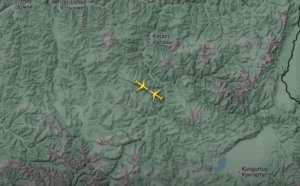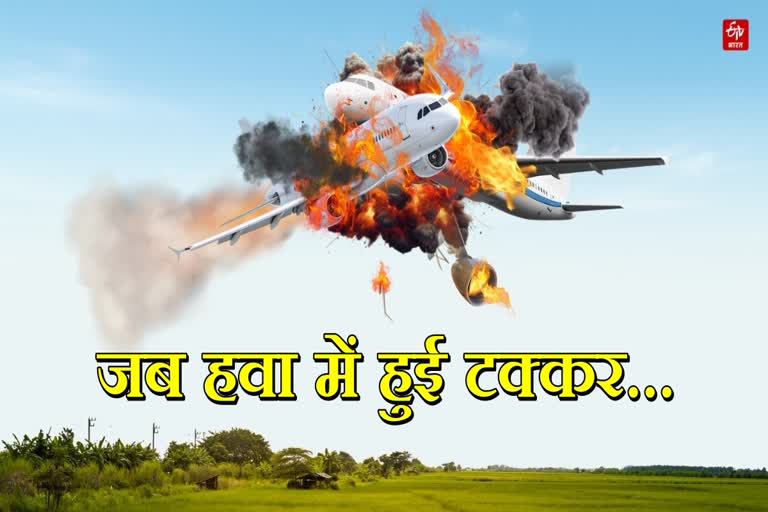Mid-Air Nightmare Averted: The Shocking Near-Collision Between Two Planes Over Russia
In the vast skies above Russia, hundreds of lives were seconds away from annihilation. An ordinary day for pilots and air traffic controllers turned into a heart-stopping aviation drama that could have become one of history’s deadliest mid-air collisions. What went wrong? Who was at fault – China’s pilot or Russia’s air traffic control? And how did a split-second decision save the world from another tragic headline?

The Incident
This terrifying event unfolded over the Tava region of Russia, involving two aircrafts flying at cruising altitudes in opposite directions. One was Air China flight CA967, an Airbus A350 operating a scheduled international passenger service from China to Milan, Italy. The other was a cargo aircraft belonging to SF Airlines, returning to China from Europe, laden with commercial freight.
Both planes were on their designated flight paths with an adequate vertical separation to ensure safety. The Air China flight was cruising at 34,000 feet while the SF Airlines cargo plane maintained a stable altitude at 35,000 feet – a difference of 1,000 feet, which is standard to avoid any risk of collision.
The Critical Mistake
Suddenly, without any clearance from Russian air traffic control (ATC), the Air China plane began to climb. It left its assigned altitude of 34,000 feet and ascended to 36,000 feet. This seemingly minor deviation was, in fact, a dangerous breach of protocol. Because as the Air China Airbus climbed past 35,000 feet, it came within just 300 feet vertically of the SF Airlines cargo plane flying directly towards it.
In the world of aviation, where speeds exceed 800 km/h, such a gap is negligible. A few seconds of delayed action could have resulted in both aircrafts colliding mid-air, raining down debris and bodies over the Russian landscape.
The Chilling Conversation
The moment Air China’s climb was detected, Russia’s air traffic controllers sprang into action. Communications between the pilot and ATC were recorded, revealing a shocking nonchalance from the Air China cockpit. When the Russian controller asked, “Did you request to climb to 36,000 feet?”, the pilot responded simply, “No, thank you.”
No apology. No explanation. Just an icy response that left even seasoned aviation officials stunned. By this time, the collision avoidance systems on both aircrafts – known as TCAS (Traffic Collision Avoidance System) – had begun blaring emergency alarms in the cockpits, signalling imminent disaster.
Quick Thinking Saves Hundreds
It was the SF Airlines cargo pilot who first visually spotted the rapidly climbing Air China plane directly ahead. Realising the deadly trajectory, he alerted the controller urgently. Within seconds, Russian ATC issued simultaneous emergency instructions: one aircraft was ordered to bank left, the other to bank right.
Both pilots executed these evasive manoeuvres with precision, their planes narrowly missing each other in a life-saving dance at 35,000 feet above Earth. In those few seconds, the fate of hundreds of passengers and crew was determined by human focus and training overcoming a dangerous lapse in communication.
Why Did It Happen?
As this near-tragedy unfolded, aviation experts began probing the cause. Initial reports indicate miscommunication and language barriers may have contributed. According to leaked cockpit voice recordings now viral on Chinese social media, the cargo plane pilot can be heard asking Air China’s pilot, “Why did you climb? Did the controller say so?” to which the Air China pilot answered, “I didn’t understand clearly.”
Further analysis reveals the Russian ATC officer on duty, a female controller, sounded visibly panicked in recordings. Experts believe a combination of her nervousness, accented English communication, and the Chinese pilot’s lack of clarity in understanding instructions led to the plane’s unsanctioned altitude change.
The Thin Line Between Life and Death
This incident underlines an uncomfortable truth about aviation: the fragile dependency on human alertness, especially in crowded airspaces where thousands of planes crisscross daily. A gap of 300 feet was all that separated hundreds of innocent people from certain death. Had the SF Airlines pilot not visually spotted the Airbus, or had the TCAS system failed to trigger in time, the world would have been mourning one of its worst aviation disasters.
Could It Have Been Worse?
A mid-air collision between a passenger aircraft and a cargo jet at cruising speed would result in both planes disintegrating instantly. Wreckage would scatter over vast territories, making rescue, identification, and recovery operations almost impossible in the remote Russian region. The psychological trauma for global aviation, still haunted by the 2002 Überlingen mid-air collision over Germany that killed 71 people, would have been devastating.
The Role of TCAS: Silent Saviour
Thankfully, since the late 1980s, TCAS has prevented countless such catastrophes by issuing Resolution Advisories (RA) to pilots when an imminent collision is detected. This system directs one plane to climb and the other to descend or instructs lateral manoeuvres to avoid impact. In this case, TCAS alarms blared in both cockpits, prompting pilots to override any confusion caused by ATC instructions.

Reactions from the Aviation World
The incident has sparked strong reactions on social media and in aviation circles. Many netizens criticised the Air China pilot’s seemingly indifferent reply. One Weibo user wrote, “No apology, no explanation. Just a cold ‘No thank you’. Hundreds of lives were nothing to him.”
Others called for stricter re-training for pilots flying international routes, ensuring they possess flawless English comprehension to avoid such lethal misunderstandings.
Meanwhile, Russian ATC authorities have ordered an internal review into their controller’s performance that day. Aviation safety experts warn that language and training must be prioritised equally alongside technological upgrades to ensure skies remain safe.
An Ongoing Investigation
Both Air China and SF Airlines have refrained from commenting officially, pending investigation. However, aviation insiders say the Air China pilot’s license and future international flights may come under scrutiny if procedural violations are confirmed. Russia’s aviation authority has submitted a preliminary report to ICAO (International Civil Aviation Organization) highlighting the near miss as a “serious incident” requiring urgent corrective action.
The Final Thought
In aviation, tragedies often teach harsh lessons written in blood. This time, fate and professionalism combined to avert unimaginable horror. But the question remains: How many such incidents go unreported? How long before luck runs out?
The next time you look out of your airplane window into endless skies, remember – life and death can be separated by just 300 feet and a single decision. Let us hope such decisions continue to be the right ones.
News
Indian Police Crack Down on Social Media Obscenity: Instagram Influencers Arrested for Vulgar Reels
Indian Police Crack Down on Social Media Obscenity: Instagram Influencers Arrested for Vulgar Reels In a move that has brought…
Indian Astronaut Group Captain Shubhanshu Shukla Returns Home After Historic Mission – Reunites with Family in Emotional Moment
Indian Astronaut Group Captain Shubhanshu Shukla Returns Home After Historic Mission – Reunites with Family in Emotional Moment Indian astronaut…
Dark Truths Behind the Glamour: Aishwarya Rai, Subhash Ghai, and Bollywood’s Unspoken Power Games
Dark Truths Behind the Glamour: Aishwarya Rai, Subhash Ghai, and Bollywood’s Unspoken Power Games Hello everyone, welcome back. Today we’re…
Where Is Rambha Today? The Untold Story of the ‘Judwaa’ Actress
Where Is Rambha Today? The Untold Story of the ‘Judwaa’ Actress The film industry – a world of glitter, fame,…
Shanaya Kapoor’s Promotions and Vikrant Massey’s Behaviour Spark Debate: Is Bollywood’s PR Narrative Getting Too Obvious?
Shanaya Kapoor’s Promotions and Vikrant Massey’s Behaviour Spark Debate: Is Bollywood’s PR Narrative Getting Too Obvious? In the promotional run-up…
Sidharth Malhotra and Kiara Advani Welcome Baby Girl: Bollywood’s Favourite Couple Embark on Parenthood
Sidharth Malhotra and Kiara Advani Welcome Baby Girl: Bollywood’s Favourite Couple Embark on Parenthood The Malhotra family is brimming with…
End of content
No more pages to load











